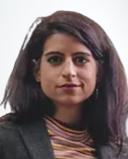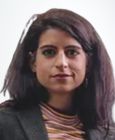Post-Traumatic Stress Disorder
I Was Sad and Did Not Want to Live
Life with complex PTSD.
Posted June 7, 2023 Reviewed by Lybi Ma
In 2019, I went to a therapist because I was very thin and very sad and really not wanting to be alive, but too tired to do anything about it. There was something inside me that was screaming, but I couldn’t explain it to anyone.
I’m better at explaining it now, or not explaining it. I write about it in my new memoir, A Flat Place. Here are some bones: I’d been born and raised in a strange family in Pakistan, headed by a father convinced that he was the answer to all the country’s problems, and probably all of God’s problems too. He’d kept us inside, banned us from talking to the neighbours, and put us through physical and psychological tests. A month before I turned sixteen, he’d disowned my sisters and me, and my (white) mother took us all to live with her mother in Scotland.
Now, fifteen or so years later, I was a postdoctoral fellow at a top university in the North of England, trying to write a monograph on flat landscapes in literature. I’d done well in my career but I felt terrible. I only wanted to be alone, but even that wasn’t enough. Most days I spent lying flat, with my cheek on the floor.
I couldn’t solve the problem of loving and being loved, of holding and being held. And I didn’t know how to live in the world either with or without love.
My therapist let me sit with my face on my knees, or stare out of the window, for weeks. She was too sensible to argue with me. I was really bad, I’d warned her, at being told what to do; it made me want to run away. So we talked about my mother and my father, and my work, and the bare, scalded landscapes inside my head. I told her: the world felt like I was walking through a flat, burned-out wasteland, and no one could see the horrors all around us except me. Flat landscapes had always given shape and meaning to my thoughts, and I described them to her in detail.
The therapist listened to the images of flat places I described, and let them become the main language between us. And it was only in passing, casually, that she mentioned complex post-traumatic stress disorder or cPTSD. It gave me a jolt. In my head I imagined war veterans: like my father, who’d seen his best friend blown up next to him in the Pakistan-Bangladesh war of 1971, when he was just seventeen. Post-traumatic stress disorder seemed a ludicrous thing to associate with that cramped, febrile house back in Lahore.
I stewed over the term ‘complex post-traumatic stress disorder’ for a while. I Googled it when I got home. Complex post-traumatic stress disorder, I learned, didn’t turn on a single shocking event, like regular PTSD. It described the results of trauma that occurred over a long period of time, usually perpetrated by people who should have looked after you, in a situation where you felt no hope of escape. Symptoms included: physical pains (like the aches which crawled through my stomach and legs and hips and chest, every day, and choked me), dissociative symptoms (like the way I went numb and let the world become unreal around me), suicidal feelings, a sense of worthlessness and permanent damage, finding friendships and relationships very difficult. Yes.
I went back to my therapist and brought it up again, half-belligerently. The therapist said: yes, this was one of the words which might make sense in the context. Another might be ‘developmental trauma’. We could use either of those names if we wanted, but we didn’t have to use any names at all. I relaxed. This left me free to move whichever way I wanted, like a queen on a chessboard.
And gradually, after sitting next to it for a long time, I decided that I was okay with the term ‘complex PTSD’. Sometimes it helps to have a word. It didn’t have to fit me seamlessly; there were things about the term which still itched, or felt strange. But words are for communication, and this helped me communicate.
And having a word was a way, strangely, of realising: I wasn’t alone. Lots of people had had similar experiences with similar results. Part of my horror and loneliness was the feeling that no one could ever understand what had happened to me, and what it had done to me. But actually, I was just a normal human being like other normal human beings, being shaped by my life in the way that everybody was, and finding my way through.
I started to use the term ‘cPTSD’ when it felt right. And now, sometimes I use it and sometimes I don’t. And I started to write my book A Flat Place, about the way that my life felt like a flat landscape with no landmarks: nothing to point to as a single, searing explanation of ‘what happened to me’. And I wrote about how that hurt but could also be beautiful: could be a way of seeing things with a brightness and intensity which was all my own.
The term ‘cPTSD’ gave me a little ledge to stand on, a place to begin, with the project of putting my world into language. I don’t think it’s part of my identity, exactly. It’s a tool, like any other, to help make myself clear to other people. No one can ever be perfectly understood: that’s part of the dilemma and the despair of being human. But using the term is a way of having faith that sometimes the act of connection is more important than the detail. That an imperfect, smudged seeing of each other might still be worthwhile.
The term ‘cPTSD’ may not always be useful to me. But for now, it is. I wrote A Flat Place to become more okay with trusting other people and trusting language to hold me.
In the stairwell outside my therapist’s office, thick red letters were propped up on a windowsill next to a diffuser, spelling LOVE and HOME. I couldn’t bear it at first: I swapped around the letters so that they read VOLE EMOH. But they were put back in their right place, every time, when I returned. LOVE. HOME. And gradually, I started leaving them alone. Words can be absurd and embarrassing, but so are we.




